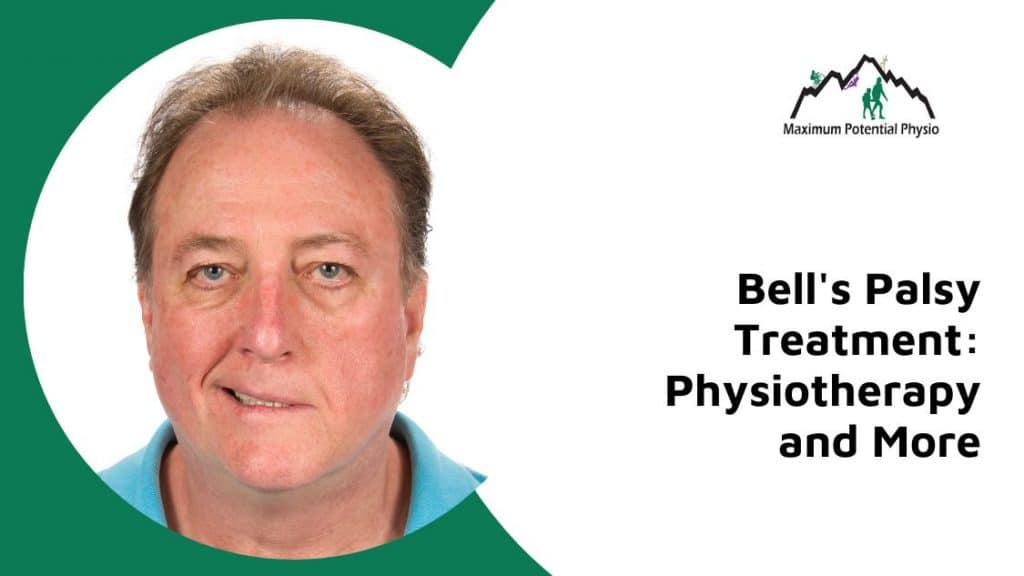Bell's Palsy Treatment: Physiotherapy and More

Bell’s palsy is a type of stroke that affects the facial nerve and the muscles on one side of your face. This can lead to weakness, abnormal sensation, drooping of your cheek, eyelid, or corner of your mouth, or even facial paralysis.
Even though Bell’s palsy is not life-threatening, it can be challenging for those who have it, causing your face to appear uneven and making eating and talking difficult. It is important to know about Bell’s palsy treatment to reduce its impact on your quality of life and normal activities.
Depending on the severity of symptoms, you may need some specific therapies as part of your treatment plan. Let’s take a look at some of the most common physiotherapies and what they offer those with Bell’s palsy.
What is physiotherapy in Bell’s palsy treatment?
Physiotherapy is the best route to go if you have Bell’s palsy. It is a therapy that uses movement and exercise to help you regain your strength, mobility, and balance. This therapy can be done individually or in groups.
There are various types of physiotherapy that you can choose from. Depending on your symptoms, your physiotherapist can decide which treatment is most appropriate for you. There are many physiotherapy treatments that can help relieve symptoms associated with Bell’s palsy.
One of the most common treatments is the use of vibration. Vibration therapy is thought to stimulate blood and lymph flow to the affected facial muscles. You can get vibration therapy using a vibration machine.
Another type of physiotherapy that you can try is the use of heat and cold compress. This can help relieve the pain and swelling in your affected facial muscles and improve their recovery.
You can also try ultrasound therapy, which uses high-frequency sound waves to stimulate the nerves and muscles in your face.
Massage and electro-physical therapy
Massage therapy is one of the best treatments for improving blood and nerve flow to the facial muscles. It can also help reduce the pain and swelling in your face. In addition, electro-physical therapy can stimulate muscle contractions, improve blood flow, and reduce pain. The good news is that massage and electro-physical therapy are very easy to do at home. This can help you reduce pain, and swelling, and improve blood flow.
Vestibular rehabilitation
Vestibular rehabilitation can help those who have imbalance or dizziness as a result of Bell’s palsy. This therapy helps you regain your balance by using different movements and techniques. It may include having you walk on an uneven surface, turn in different directions, walk backwards, and even stand on a swivel chair with your feet moving.
You may also be asked to wear special eye patches while you are up on the chair or stand on an uneven surface. This helps reduce your anxiety and gives you confidence when walking on uneven surfaces. You can get vestibular rehabilitation from an audiologist or physical therapist. You can also do it at home. It is important to note that this kind of rehabilitation may take several weeks to show results.
Speech and Language Therapy
Speech and language therapy may be recommended if you have trouble speaking or swallowing as a result of Bell’s palsy. This therapy can help you develop a new strategy when speaking or swallowing. It can also help you regain your self-confidence when speaking in front of other people.
When planning your speech therapy sessions, your speech and language therapist can help you come up with ways to cope with the challenges of Bell’s palsy. You may also be given special tools or gadgets that can help you improve your communication skills and swallowing abilities.
Occupational Therapy
If you have trouble with your hand movements or are unable to use your hands properly as a result of Bell’s palsy, you may need to go through occupational therapy. This therapy can help you regain your hand movements while also providing you with tools and techniques that you can use to help with your daily activities.
You may be given tools like braces and splints that you can use to prevent your fingers from moving. You may also be given special physical exercises to help improve your hand coordination. While OT can help reduce the impact of Bell’s palsy, it is important to note that it will not cure it. You may need to go for several sessions until you can improve your hand movements.
Conclusion
Bell’s palsy is a condition in which the facial nerve is inflamed and/or compressed leading to weakness or paralysis of one side of the face, including eyelid, eye, mouth and/or hearing loss. While there is no cure for Bell’s palsy, there are treatment options that can help reduce the impact of the condition. These include physiotherapy and massage therapy, as well as vestibular rehabilitation and speech and language therapy.
Call Maximum Potential Physiotherapy today and let our team of health care providers help improve your quality of life. Our physiotherapy clinic delivers care with compassion in a friendly environment. Help with your Bell's palsy is just a phone call away.
